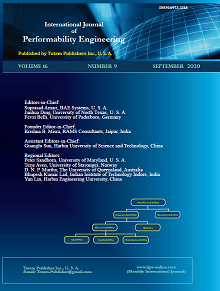-
Deep Convolutional Neural Networks Approach for Classification of Lung Diseases using X-Rays: COVID-19, Pneumonia, and Tuberculosis
- Narayani Patil, Kalyani Ingole, and T. Rajani Mangala
-
2020, 16(9):
1332-1340.
doi:10.23940/ijpe.20.09.p2.13321340
-
 Abstract
Abstract
 PDF (432KB)
PDF (432KB)

-
References |
Related Articles
In this study, we have proposed a model to identify pulmonary diseases such as COVID-19, pneumonia, and tuberculosis from X-ray images. Identifying and differentiating among these diseases is already a hard task for doctors. Recent findings obtained using radiology imaging techniques suggest that X-ray images contain salient information about these diseases. Application of deep convolutional neural networks coupled with radiological imaging can be beneficial for the accurate diagnosis of these diseases, and it can also be assistive to overcome the problem of shortage of healthcare experts in remote villages. We have implemented eight deep convolutional neural network (Deep CNN) models: AlexNet, VGG16, VGG19, DenseNet201, Xception, ResNet50, Sequential, and InceptionV3. Comparative analysis of the implemented models suggests that deep learning with X-ray imaging extracts significant biomarkers related to these diseases, while the best accuracy and least loss is obtained while training our model with VGG16. The training accuracy, precision, and false-positive obtained for VGG16 is 99.66%, 97.56%, and 2.24%, respectively.

